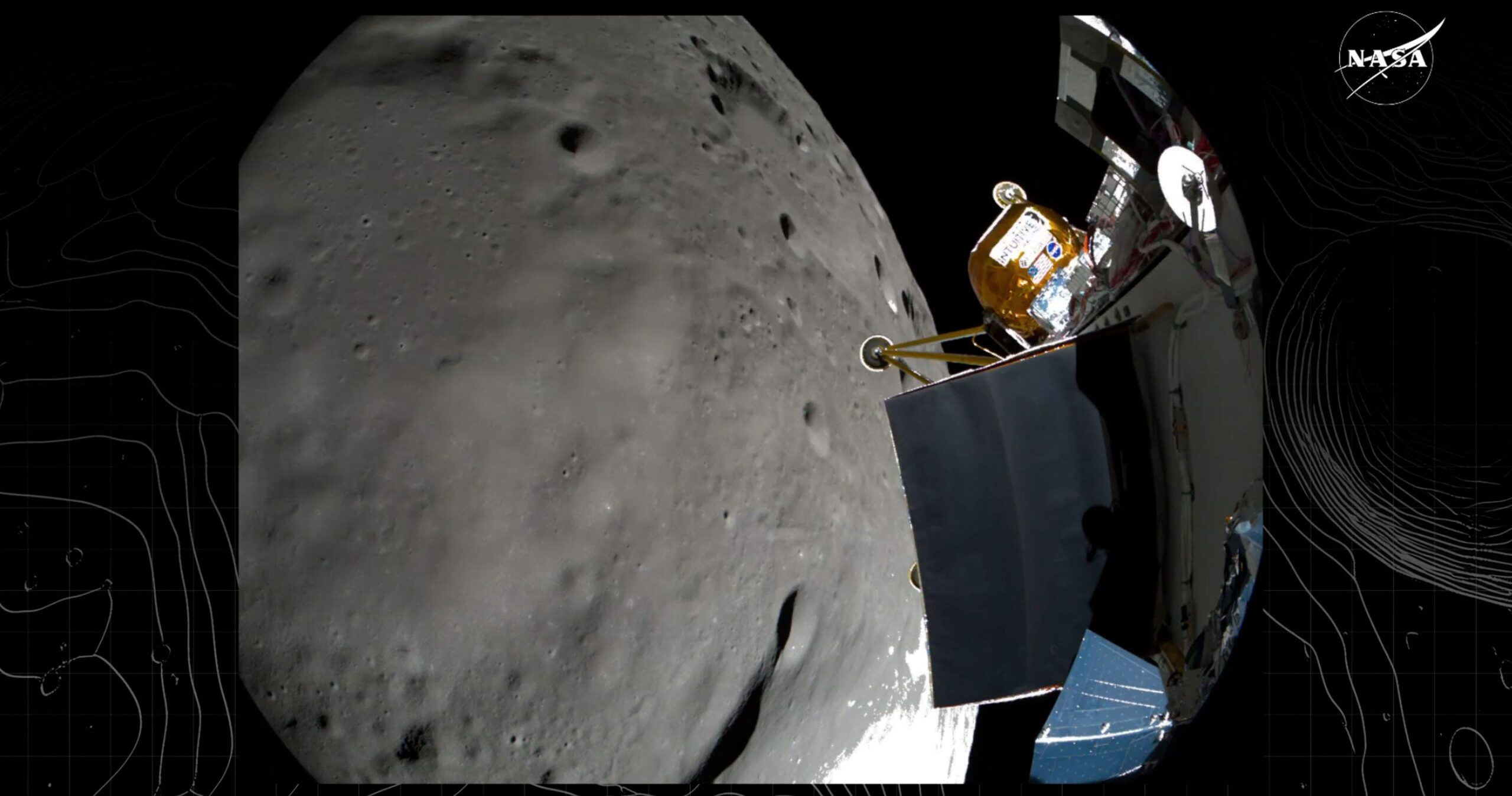
Lunar Landing Attempt: Intuitive Machines’ IM-2 Mission Faces Uncertainty
The second American-built lunar lander in a week, Intuitive Machines’ IM-2 mission, has reached the vicinity of the moon’s south pole, marking a significant step in the ongoing exploration of our celestial neighbor. However, the exact location and operational status of the lander, named Athena, remain uncertain due to a signal loss experienced shortly after the anticipated touchdown time. This mission, a crucial component of NASA’s ambitious Commercial Lunar Payload Services (CLPS) initiative, worth $2.6 billion, aims to unlock the secrets of lunar ice and pave the way for future human presence on the moon.
The Mission’s Ambitions
The IM-2 mission, also known as the Athena lander, carries a sophisticated suite of scientific instruments designed to probe the lunar surface for valuable resources. Among these tools is a drill and mass spectrometer, specifically engineered to bore into the moon’s soil and analyze the composition, with a primary focus on detecting water ice. The presence of water ice on the moon holds immense significance for future lunar missions, as it can be converted into drinkable water, oxygen for breathing, and even rocket propellant, thereby reducing the reliance on Earth-based supplies and enabling long-term lunar habitation.
The intended landing site for Athena was Mons Mouton, a region near the lunar south pole believed to harbor significant deposits of water ice. This region is of particular interest to scientists and space agencies due to its permanently shadowed craters, which remain shielded from sunlight and maintain extremely low temperatures, potentially trapping and preserving water ice for billions of years.
Signal Loss and Uncertainty
The IM-2 mission was on track for its targeted landing at 12:32 p.m. Thursday. The landing attempt, however, encountered a hurdle when the mission experienced a signal loss from one of its communication radios. This communication disruption has created uncertainty regarding the lander’s precise location on the lunar surface, its orientation, and overall operational status.
Intuitive Machines engineers are working diligently to re-establish a stable communication link with Athena and gather telemetry data that will shed light on the lander’s condition. They are analyzing the data that has been received to assess the vehicle’s attitude and determine the next steps for the mission. The team is also relying on external resources, such as images from NASA’s Lunar Reconnaissance Orbiter (LRO), to gain a clearer picture of Athena’s location and orientation on the lunar surface.
Steve Altemus, CEO of Intuitive Machines, acknowledged the uncertainty during a press conference on Thursday, stating, "I don’t have all the data yet to say exactly what the attitude of the vehicle is. We’re collecting photos now and downlinking those, and we’re going to get a picture from the lunar reconnaissance orbiter camera from above, and we’ll confirm that over the coming days."
Preceding Lunar Endeavors
The IM-2 mission follows closely on the heels of another CLPS mission, Firefly Aerospace’s Blue Ghost Mission 1, which successfully landed on the moon on March 2. The Blue Ghost mission is focused on surveying the lunar environment on the Earth-facing side of the moon, utilizing NASA instruments to gather valuable data.
Intuitive Machines also has prior experience in lunar landings. Their IM-1 lander, Odysseus, achieved a historic milestone in February 2024 by becoming the first American spacecraft since the Apollo era to successfully touch down on the moon. Despite tipping over upon landing, Odysseus continued to transmit mission data back to Earth, providing valuable insights into the lunar environment and the performance of the landing system.
The successful landing of Odysseus, even with its unexpected orientation, demonstrated the capabilities of commercial companies in reaching the lunar surface and conducting scientific investigations. This success paved the way for IM-2 and other CLPS missions, further solidifying the role of commercial partnerships in NASA’s lunar exploration efforts.
The Athena Lander’s Payload
The Athena lander carries a diverse suite of scientific instruments designed to explore the lunar south pole. This payload includes:
-
NASA’s PRIME-1 drill suite: This advanced drill is designed to penetrate the lunar soil and extract samples from beneath the surface.
-
A mass spectrometer: This instrument analyzes the composition of the extracted soil samples, identifying the presence of water ice and other volatile compounds.
-
Mobile Autonomous Prospecting Platform rover: This small rover is designed to explore the surrounding area and collect additional samples for analysis.
-
Micro Nova Hopper named Grace: This experimental hopper is intended to hop across the lunar surface, providing a unique perspective and enabling access to challenging terrains.
Future Outlook
Despite the current uncertainty surrounding the Athena lander’s status, the IM-2 mission represents a significant step forward in lunar exploration. The CLPS initiative, which aims to leverage the capabilities of commercial companies to deliver scientific payloads to the moon, is proving to be a viable and cost-effective approach to lunar exploration.
The data collected by Athena, once the lander’s status is confirmed and communication is fully restored, will provide valuable insights into the distribution and composition of water ice at the lunar south pole. This information is crucial for planning future lunar missions, including those aimed at establishing a permanent human presence on the moon.
The success of the CLPS initiative and the ongoing efforts to explore the lunar south pole are paving the way for a new era of lunar exploration, one that promises to unlock the secrets of our celestial neighbor and pave the way for future human endeavors beyond Earth.
